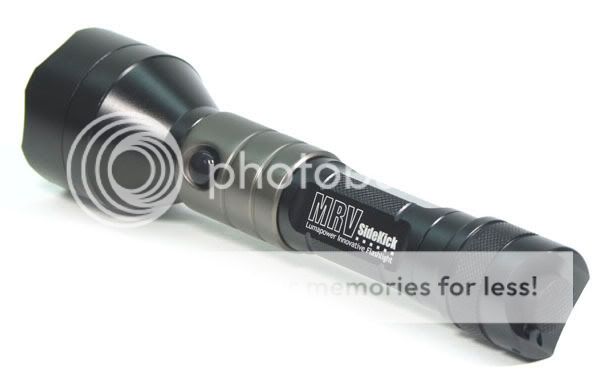.
Thanks to everyone's input and help on this board I've decided to get a Lumapower Lumahunter MRV SK v1.1 Tactical LED

http://www.batteryjunction.com/lumapower-v11-mrv-sk.html
Now, I need to find what batteries and charger to get. There are two batteries on the page that sells the flashlight and a charger. Then there are 2 batteries that others recommended. Also, what charger is best?
Batteries on the same page as the flashlight:
1.) Li-Ion 18650 3.7V 2600mAh rechargeable battery FULLY PROTECTED with PCB Lithium Ion (as low as) $6.69!
2.) Ultrafire 18650 2400mah BUTTON TOP Protected Rechargeable Lithium Battery Li-Ion UF18650 (as low as) $6.69!
And the two batteries that others recommended:
1.) http://www.shiningbeam.com/servlet/the-47/trustfire-18650-li-dsh-ion/Detail
2.) http://www.lighthound.com/AW-18650-Protected-2200-mAh-Rechargeable-Lithium-Battery_p_105.html
The charger:
1.) TL-100 Universal Li-Ion Charger for 18650, 17670 & 16340 cells (as low as) $11.95!
And the recommended charger:
1.) http://www.lighthound.com/Ultrafire...3-37-volt-Lithium-Battery-Charger_p_2279.html
The batteries only cost a few dollars difference, so I don't mind paying a little more for quality. This flashlight will be for Police work, so I will be using it a lot. I need batteries that will last a long time and will be recharged quite often.
Also, if I use my flashlight for only a little bit during my shift is it ok to put it right back on the charger to make sure it has a full charge for the next shift? Or will that ruin the batteries? (Memory issues? Should you fully drain the batteries and twice right away?)
Lastly, with heavy usage like police work, how long are these batteries expected to last?
.
Thanks to everyone's input and help on this board I've decided to get a Lumapower Lumahunter MRV SK v1.1 Tactical LED

http://www.batteryjunction.com/lumapower-v11-mrv-sk.html
Now, I need to find what batteries and charger to get. There are two batteries on the page that sells the flashlight and a charger. Then there are 2 batteries that others recommended. Also, what charger is best?
Batteries on the same page as the flashlight:
1.) Li-Ion 18650 3.7V 2600mAh rechargeable battery FULLY PROTECTED with PCB Lithium Ion (as low as) $6.69!
2.) Ultrafire 18650 2400mah BUTTON TOP Protected Rechargeable Lithium Battery Li-Ion UF18650 (as low as) $6.69!
And the two batteries that others recommended:
1.) http://www.shiningbeam.com/servlet/the-47/trustfire-18650-li-dsh-ion/Detail
2.) http://www.lighthound.com/AW-18650-Protected-2200-mAh-Rechargeable-Lithium-Battery_p_105.html
The charger:
1.) TL-100 Universal Li-Ion Charger for 18650, 17670 & 16340 cells (as low as) $11.95!
And the recommended charger:
1.) http://www.lighthound.com/Ultrafire...3-37-volt-Lithium-Battery-Charger_p_2279.html
The batteries only cost a few dollars difference, so I don't mind paying a little more for quality. This flashlight will be for Police work, so I will be using it a lot. I need batteries that will last a long time and will be recharged quite often.
Also, if I use my flashlight for only a little bit during my shift is it ok to put it right back on the charger to make sure it has a full charge for the next shift? Or will that ruin the batteries? (Memory issues? Should you fully drain the batteries and twice right away?)
Lastly, with heavy usage like police work, how long are these batteries expected to last?
.
Last edited:

